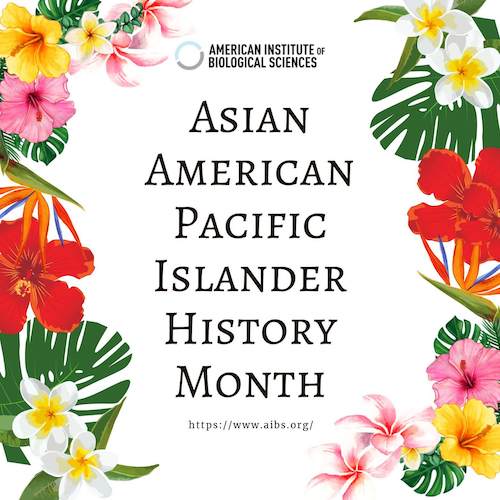Dr. Richard Nakamura, AIBS Board Member and National Institutes of Health and National Institute of Mental Health (Retired)
This piece is one in a series of blog entries called “BioScience Bytes.” In them, authors provide commentary on topical issues, enlivening the sciences and making science approachable for all readers.

American Institute of Biological Sciences (AIBS) is celebrating Asian American Native Hawaiian Pacific Islander Heritage Month by highlighting individuals, organizations, articles, and activities that are shining a light on Asian American Native Hawaiian Pacific Islander scientific excellence.
Last month, my family held a celebration of life for my mother, Tetsuko Nakamura, who died at 101 years of age in late 2021. This celebration had my family thinking of its odyssey in America. Tetsuko was the eldest child born in the US to two Japanese that immigrated at the beginning of the twentieth century. The family struggled at managing a store and farming in the Los Angeles area. Evidence from 1940 suggested that teenage Tetsuko was a “school girl” housekeeper for a Hollywood family and was the primary money earner supporting her family of two parents and five sisters. In 1942, she and her family were incarcerated at Manzanar as “enemy aliens.” Despite the injustice, she felt that supporting the American war effort was the right thing to do, as did many Japanese-American males that joined the American armed forces.
Our mother’s war transition was part of a larger change that gradually shifted the perception of Asian immigrants from “yellow peril” in the 1920s to 1940s to “model minority” in the last part of the 20th century. She died with grandchildren doing well in America. Now, with tensions with China increasing and worries about racial targeting, are Asians being shifted back to the “yellow peril”?
My family heritage story in America is far from unusual yet a reminder that hardship, much worse than ours, is part of the story of many successful families and that all deserve a chance. Even outside of the months devoted to particular groups, please encourage the telling (and recording) of family odysseys to remind us of our common humanity and common desire to be included as part of society, despite differences.
Invite someone from your lab, office, department, institution to talk about their history and the factors that foster a sense of inclusion.